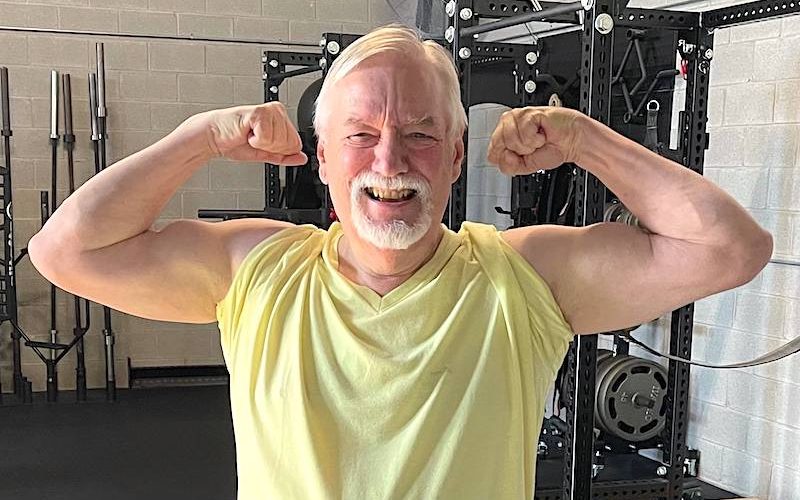
Lee Bacchi went on and off the exercise wagon for decades – not really training with a purpose, but going to the gym sometimes.
That continued even after he was diagnosed with Type 2 diabetes more than 20 years ago.
But finally, this year, his growing belly was getting to be too much. Shirts were tight. Belts “didn’t work.” He weighed 209 pounds, standing 5 feet, 9 inches. It was even interfering with his workouts, specifically the hex bar deadlifts he enjoyed with his trainer.
“I said, ‘I need to work on it,’” recalls Lee, now 70 and a retired Catholic priest.
Lee got serious about his training – and, more importantly perhaps, he consulted a nutritionist to gain control over his eating habits.
Now, he’s within sight of his 170-pound weight goal. And his doctor is delighted. Lee’s blood numbers are much improved, and his diabetes medication has been greatly reduced.
Exercise and Diet Are Crucial in Fighting Diabetes
November is American Diabetes Month, a great time to highlight the link between exercise, diet and the disease, including for people over age 50.
The American Diabetes Association says 30 million Americans have diabetes, the seventh leading cause of death in the United States. A person’s weight is a major factor. Exercise and proper eating are important in preventing and managing diabetes.
The ADA says we can take steps to prevent type 2, the most common form. “Stay at a healthy weight, eat well and be active. With these steps, you can stay healthier longer and lower your risk of diabetes.”
The ADA defines type 2 diabetes as “characterized by high blood glucose levels caused by either a lack of insulin or the body’s inability to use insulin efficiently. Type 2 diabetes develops most often in middle-aged and older adults but can appear in young people.”
Among Americans age 65 and older, 25.2 percent or 12 million people have diabetes, the ADA says
If you think you might be at risk, talk to your doctor. If you have been diagnosed, be sure to know about proper eating and exercising and take care of yourself every day.
How exercise helps
Physical activity:
- Helps lower blood glucose, blood pressure, HDL cholesterol and triglycerides
- Lowers risk for pre-diabetes, type 2 diabetes, heart disease and stroke
- Relieves stress
- Strengthens the heart, muscles and bones
- Improves blood circulation and tones muscles
- Improves flexibility and reduces inflammation
And no, you’re not too old to start.
“Even if you’ve never exercised before, you can find ways to add physical activity to your day,” the ADA says. “Even if your activities aren’t strenuous, you’ll still get health benefits.”
For Lee, the double impact of purposeful training (resistance training and working on a treadmill) combined with mindful eating did the trick. He eliminated most starchy carbohydrates and eats mostly protein and vegetables.
“I’m feeling good, and people are telling me I look good. I didn’t think I could do it this well, but I have.”
>Let us show you the healthy path to prevent and treat Type 2 diabetes, as well as other ailments common later in life.
Holly Kouvo is a personal trainer, functional aging specialist, senior fitness specialist, brain health trainer, writer, and speaker.

